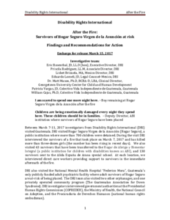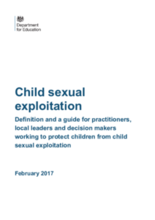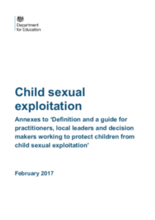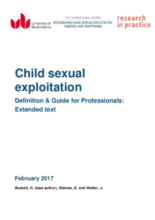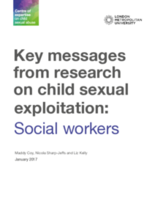Displaying 231 - 240 of 463
In order to better serve youth trafficking victims, this study developed a Human Trafficking Screening Tool (HTST) and pretested it with 617 runaway and homeless youth and child welfare-involved youth.
DRI’s main finding is that survivors of the fire at Hogar Seguro Virgen de la Asunción face immediate danger – including detention in other institutions where they face continued segregation and abuse.
This chapter explores the drivers behind the continued, and in some parts of the world, growing, institutionalization of children.
The Committee's recommendations on the issues relevant to children's care are highlighted, as well as other care-related concluding observations, ratification dates, and links to the Universal Periodic Review and Hague Intercountry Adoption Country Profile.
The advice presented in this report is non-statutory, and has been produced to help practitioners, local leaders and decision makers who work with children and families to identify child sexual exploitation and take appropriate action in response.
This collection of annexes accompanies the publication entitled ‘Definition and a guide for practitioners, local leaders and decision makers working to protect children from child sexual exploitation.’
The document outlines the new civil definition of child sexual exploitation, developed by the Home Office and DfE, together with an overview of our current understanding of the issue and an evidence-informed set of principles for responding.
Delphine Moralis discusses the 10,000 refugee children that have gone missing in the EU.
This review is intended to provide Barnardo’s with an overview of what ‘direct work’ with young people entails in the context of CSE.
This briefing paper is for social workers. It brings together key messages from research on child sexual exploitation with implications for practice and should be read in conjunction with guidance for professionals.


